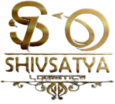Search engine users and content owners are the other two segments; they receive a free service from Google. Porter’s Five Forcesis an excellent way of looking at the long-term competitive advantage. Try walking through your company’s potential rivals, new entrants in the market, suppliers, customers, and substitute products. If your canvas still hangs together, you can take a sigh of relief. If it doesn’t, you might have to rework the profitability. For example, Hello Bello is product-based as the company provides environmentally friendly and affordable diapers and baby products.

- This process can include high automation, extensive outsourcing, low price Value Propositions, and the leanest possible cost structure.
- In this section, you need to establish the type of relationship you will have with each of your customer segments or how you will interact with them throughout their journey with your company.
- If you are confused about the information you should include when it comes to a persona, it is just a detailed description of each customer group you list.
- For more than fifteen years of existence, it has proved its worth in the corporate community.
It is a framework that helps to align the thinking/understanding of the foil character literary definition team members’ business models, and it can be said to be a framework that has many advantages over disadvantages. Refers to all methods of communicating with target customer segments and transacting products/services. When considering channels, most are’Where do customers buy our products/services?
What Is The Business Model Canvas Bmc?
You have a list of Key Activities and Key Resources linked to your value propositions. Now you need to find out whether they are aligned with a strategy that is unique to you. Could you bring in outside help to refine some activities? The outcome is a list that denotes which partner is handling what.
Channels: How Do Customers Find Your Company?
In the Key Activities Section, you describe how you will make the business work. For a product-driven organisation, you also need to learn about new techniques for building better solutions. In the end, you should get a clear idea about which activities are core to your business. Channel refers to how you deliver your products to the market.
Every company needs profitable customers in order to survive. Using the BMC, you will determine what your customer segment will be. A good way to think about this block is to treat it as the demographic information of your customers. The information you may want to predict and test for this section could include age, gender, time spent working, etc.
If there are no search users, there will not be advertisers and vice versa, search users will not be able to freely take advantage of this platform without advertisers. Moreover, you can instantaneously and rapidly update your approach or any features due to your market observation. There are always new things adopted and some old ones have to be eliminated, which require you to be ready for any changes, to swivel due to reality. However, it will be useless if you just stop at these highlights. The next step is to convert the canvas into your roadmap with your product’s details. Check to see whether your Key activities are relatable to your value proposition or not.
It won’t take several hours to retype and reprint a 40-page report. Every time you have a meeting where a team is generating ideas, place the canvas in front. A plan helps to make sure that changes don’t contravene core principles.
Resources
The value provided by the organization reaches customers through communication, logistics, and sales channels. This component defines groups of people / organizations that the company has as its target audience. Because these groups are distinct, their needs are as well. By targeting them, it is easier to develop actions to serve each one in the best way.
